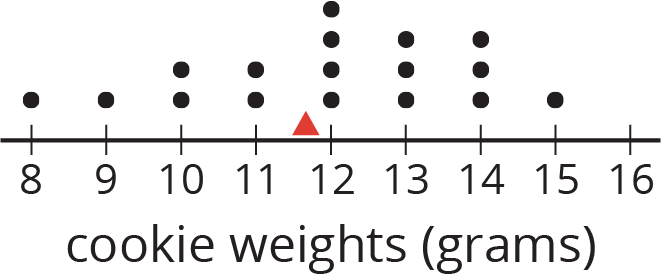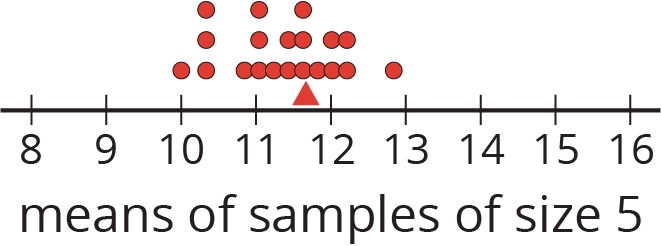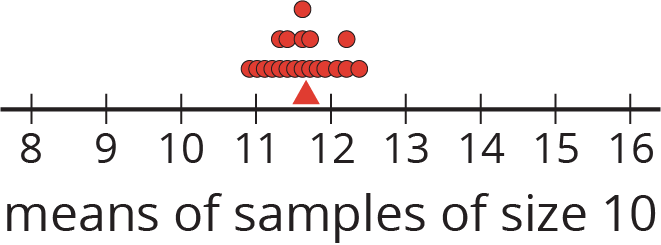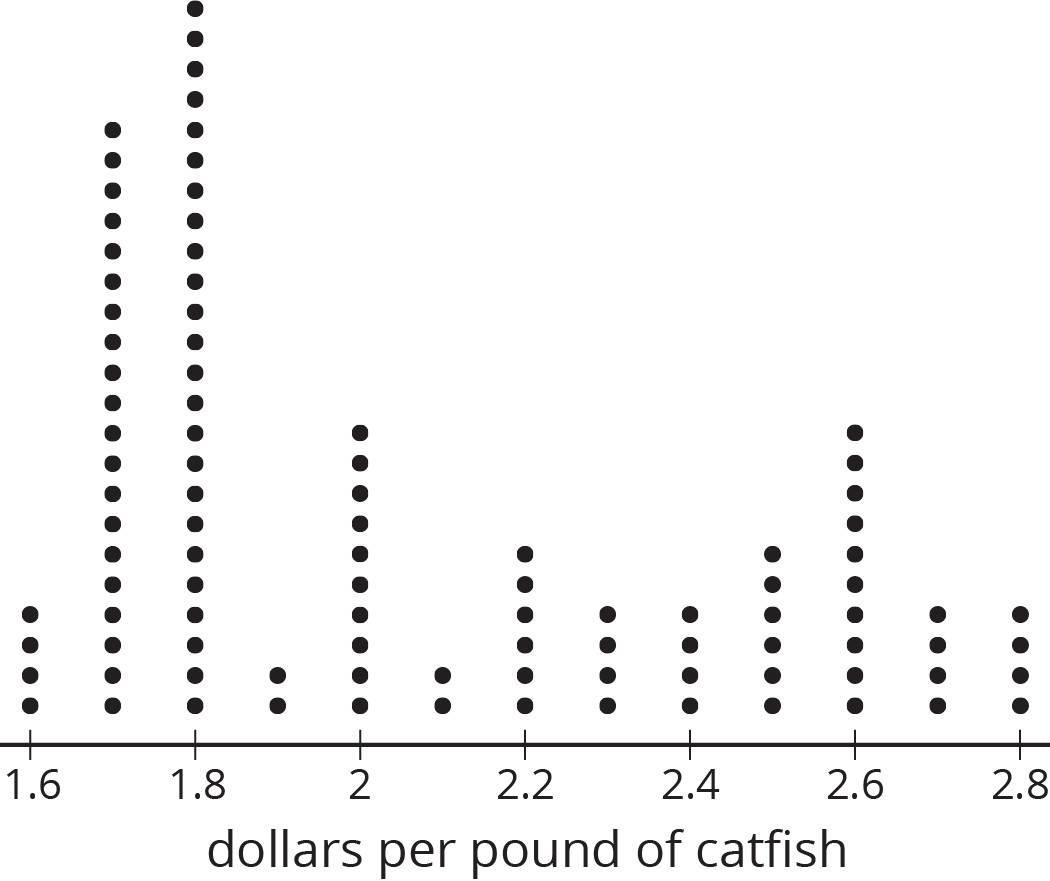Lesson 12
More about Sampling Variability
Let’s compare samples from the same population.
12.1: Average Reactions
The other day, you worked with the reaction times of twelfth graders to see if they were fast enough to help out at the track meet. Look back at the sample you collected.
- Calculate the mean reaction time for your sample.
- Did you and your partner get the same sample mean? Explain why or why not.
12.2: Reaction Population
Your teacher will display a blank dot plot.
- Plot your sample mean from the previous activity on your teacher's dot plot.
-
What do you notice about the distribution of the sample means from the class?
- Where is the center?
- Is there a lot of variability?
- Is it approximately symmetric?
-
The population mean is 0.442 seconds. How does this value compare to the sample means from the class?
Pause here so your teacher can display a dot plot of the population of reaction times.
-
What do you notice about the distribution of the population?
- Where is the center?
- Is there a lot of variability?
- Is it approximately symmetric?
-
Compare the two displayed dot plots.
-
Based on the distribution of sample means from the class, do you think the mean of a random sample of 20 items is likely to be:
- within 0.01 seconds of the actual population mean?
- within 0.1 seconds of the actual population mean?
Explain or show your reasoning.
12.3: How Much Do You Trust the Answer?
The other day you worked with 2 different samples of viewers from each of 3 different television shows. Each sample included 10 viewers. Here are the mean ages for 100 different samples of viewers from each show.



-
For each show, use the dot plot to estimate the population mean.
-
Trivia the Game Show
-
Science Experiments YOU Can Do
-
Learning to Read
-
- For each show, are most of the sample means within 1 year of your estimated population mean?
- Suppose you take a new random sample of 10 viewers for each of the 3 shows. Which show do you expect to have the new sample mean closest to the population mean? Explain or show your reasoning.
Market research shows that advertisements for retirement plans appeal to people between the ages of 40 and 55. Younger people are usually not interested and older people often already have a plan. Is it a good idea to advertise retirement plans during any of these three shows? Explain your reasoning.
Summary
This dot plot shows the weights, in grams, of 18 cookies. The triangle indicates the mean weight, which is 11.6 grams.

This dot plot shows the means of 20 samples of 5 cookies, selected at random. Again, the triangle shows the mean for the population of cookies. Notice that most of the sample means are fairly close to the mean of the entire population.

This dot plot shows the means of 20 samples of 10 cookies, selected at random. Notice that the means for these samples are even closer to the mean for the entire population.

In general, as the sample size gets bigger, the mean of a sample is more likely to be closer to the mean of the population.
Glossary Entries
- interquartile range (IQR)
The interquartile range is one way to measure how spread out a data set is. We sometimes call this the IQR. To find the interquartile range we subtract the first quartile from the third quartile.
For example, the IQR of this data set is 20 because \(50-30=20\).
22 29 30 31 32 43 44 45 50 50 59 Q1 Q2 Q3 - population
A population is a set of people or things that we want to study.
For example, if we want to study the heights of people on different sports teams, the population would be all the people on the teams.
- representative
A sample is representative of a population if its distribution resembles the population's distribution in center, shape, and spread.
For example, this dot plot represents a population.

This dot plot shows a sample that is representative of the population.

- sample
A sample is part of a population. For example, a population could be all the seventh grade students at one school. One sample of that population is all the seventh grade students who are in band.